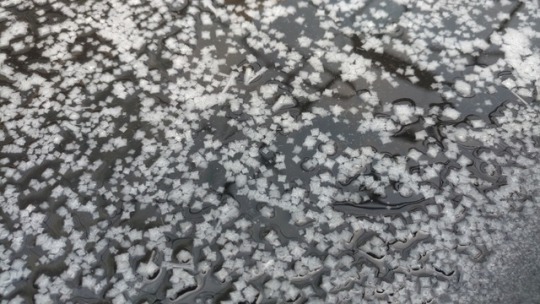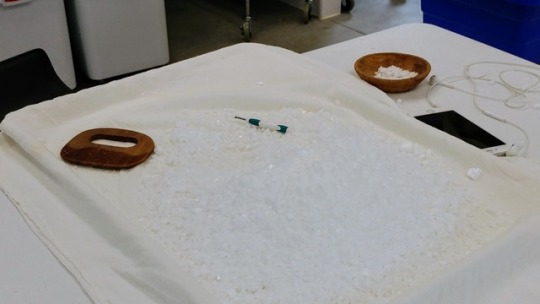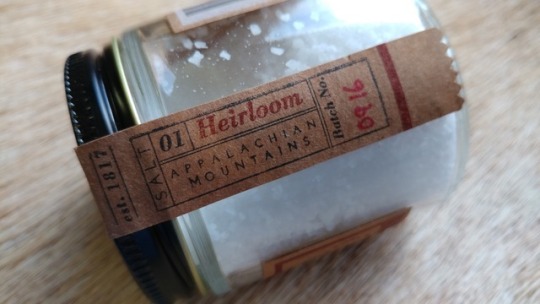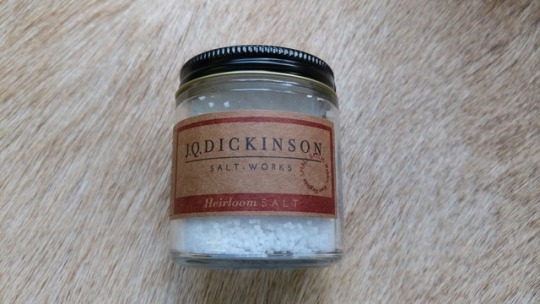#Brine To Water Heat Pump Market Size
Explore tagged Tumblr posts
Text
Brine To Water Heat Pump Market Review and Growth Forecasts 2024 - 2032
The brine to water heat pump market is emerging as a significant player in the renewable energy landscape. As the world increasingly prioritizes energy efficiency and sustainability, these heat pumps offer an innovative solution for heating and cooling applications. This article explores the market dynamics, trends, applications, challenges, and future outlook for brine to water heat pumps.

Understanding Brine to Water Heat Pumps
What are Brine to Water Heat Pumps?
The brine to water heat pump market is poised for substantial growth driven by advancements in technology, increasing demand for renewable energy, and a focus on energy efficiency. Brine to water heat pumps utilize brine (a high-concentration salt solution) as a heat source or sink to provide heating or cooling to buildings. These systems operate on the principle of heat transfer, extracting heat from the brine during winter and transferring it to the water supply, or vice versa during summer.
Advantages of Brine to Water Heat Pumps
Energy Efficiency: These systems offer high efficiency by utilizing renewable energy sources.
Low Operating Costs:��Once installed, they typically require less energy than conventional heating systems.
Environmental Benefits: They significantly reduce greenhouse gas emissions compared to fossil fuel-based heating systems.
Market Trends
Increasing Demand for Renewable Energy
The global push for renewable energy sources is driving the growth of the brine to water heat pump market. Governments and organizations are implementing policies and incentives to promote renewable technologies, enhancing market prospects.
Advancements in Technology
Technological innovations, such as improved compressor designs and advanced control systems, are making brine to water heat pumps more efficient and user-friendly. These advancements are increasing adoption across residential, commercial, and industrial sectors.
Growing Focus on Energy Efficiency
With rising energy costs and environmental concerns, there is a heightened focus on energy efficiency in building design and operation. Brine to water heat pumps are being integrated into new construction projects as part of sustainable building practices.
Applications
Residential Heating and Cooling
Brine to water heat pumps are increasingly used in residential settings to provide efficient heating and cooling. They offer homeowners an eco-friendly alternative to traditional HVAC systems.
Commercial and Industrial Use
In commercial and industrial sectors, these heat pumps are utilized for large-scale heating and cooling needs. They are particularly effective in facilities requiring consistent temperature control, such as food processing plants and warehouses.
District Heating Systems
Brine to water heat pumps can be integrated into district heating systems, providing centralized heating solutions for multiple buildings or communities, thereby enhancing overall energy efficiency.
Challenges Facing the Market
High Initial Costs
The initial investment for brine to water heat pump systems can be substantial, which may deter potential buyers. However, long-term savings on energy bills can offset these costs over time.
Limited Awareness
Despite their benefits, there is limited awareness and understanding of brine to water heat pumps among consumers and businesses. Increasing educational efforts will be essential to drive market growth.
Regulatory Hurdles
Navigating regulatory requirements and obtaining necessary permits can pose challenges for companies entering the market. Compliance with local building codes and environmental regulations is critical.
Future Outlook
Expanding Market Opportunities
As the demand for renewable energy solutions continues to grow, the brine to water heat pump market is expected to expand significantly. Increased investment in infrastructure and technology will further enhance market potential.
Integration with Smart Technologies
The integration of smart technologies, such as IoT and automation, will likely improve the efficiency and usability of brine to water heat pumps. Real-time monitoring and control will provide users with enhanced energy management capabilities.
Focus on Sustainability
With a global emphasis on sustainability, brine to water heat pumps will play a vital role in reducing carbon footprints and achieving energy efficiency goals across various sectors.
Conclusion
Despite facing challenges like high initial costs and limited awareness, the future looks promising as more consumers and industries recognize the benefits of this innovative heating and cooling solution. Embracing brine to water heat pumps will be essential for achieving a sustainable energy future.
#Brine To Water Heat Pump Market Size#Brine To Water Heat Pump Market Trend#Brine To Water Heat Pump Market Growth
0 notes
Text
Revealing the Worldwide Salt Manufacturers Report: An Extensive Examination of Solar Salt, Salt in Brine, Rock Salt, and Vacuum Salt
A thorough investigation of the world's salt producers is essential for stakeholders looking to get a deep understanding of the market dynamics, given the size and diversity of the salt sector. The four main kinds of salt production that are covered in this paper are solar salt, rock salt, vacuum salt, and salt in brine. The goal of this thorough research is to provide a full picture of the worldwide salt business, including vital information for both industry insiders and general interest public.
Salt can be obtained from different sources, i.e. solution mining of underground salt deposits, seawater, natural brines, lake brines, as well as from underground rock salt deposits. The variety of sources spreads worldwide, with the seawater brines being mainly sourced in coastal regions with warmer climates, and most solution mining taking place in regions with large chemical industries. More than 100 countries exploit domestic salt resources to satisfy regional- as well as globaldemand.
Methods of Production:
Solar Evaporation of Brines: A common method in regions with plenty of sunlight, natural evaporation concentrates salt and finally results in crystallization. This method is cost-effective and environmentally friendly as it harnesses solar radiation and windto concentratethe brines.
Mechanical Evaporation of Brines: Salt can be crystallized from brines via mechanical evaporation. Energy consumption is significant, and modern installations use energy effective combinations of vacuum and heat.
Mining: This method, which involves extracting salt from underground salt deposits, is often used in areas with significant subsurface salt deposits. Renowned for its effectiveness and scalability, mining contributes significantly to meeting global salt demand.
Solution mining: Solution mining involves the pumping of water into underground salt deposits, dissolution of the salt, and pumping the brine to the surface for direct use of brine or to crystallize the contained salt. Solution mining allows to reach deep salt deposits, and is cost effective for the direct use of brines.
In conclusion,
understanding the nuances of salt production in the form of brine, rock salt, solar salt, and vacuum salt is essential for making educated investment decisions. This paper provides a broad overview of production techniques and major worldwide producers, acting as a reference point and illuminating regional differences and technical developments. For anyone investigating and participating in the ever-changing field of salt production, this study is an invaluable tool for navigating the intricacies of the salt business. In a sector that is changing quickly, stakeholders may use this information to adjust to market trends, improve manufacturing techniques, and make wise judgments. Source: https://medium.com/@saltmarketinformation/revealing-the-worldwide-salt-manufacturers-report-an-extensive-examination-of-solar-salt-salt-in-db9f7e8e5e28
0 notes
Text
YORK JCI CYKR5RQK4K15DADBG Compound Centrifugal Chiller/Heat Pump dunham-bush DCLCD- X- T CYK Compound Centrifugal Chiller/Heat Pump 300-2,500 TR (2,000-11,000 kW) The highly adaptable YORK® CYK Compound Centrifugal Chiller operates beyond the range of typical centrifugal chillers.
Uses two centrifugal compressors for high-head conditions and differential pressures Flash economizer On-board control panel simplifies operation For most of the 20th Century, DB has been providing innovative solutions for the heating, air conditioning and refrigeration needs of its customers. Today’s global company has a proud heritage that began over a 100 years’ ago. In the 1960s, DB introduced a revolutionary compressor technology for air conditioning and refrigeration applications – the twin helical screw compressor. Highly efficient, durable and very reliable, DB’s experience of more than 50 years in the application of twin screw compressors in the HVAC industry is unrivalled. Customers demand high efficiency products with exceptional value and DB’s new range of DCLC centrifugal chillers satisfy modern market requirements with outstanding energy efficiency and proven technology, designed specifically for environmentally safe refrigerants. This combination ensures the most cost-effective, reliable solution for comfort cooling and process cooling applications. DB continues to deliver performance with reliability packaged in the most energy efficient way with the introduction of the DCLC range of centrifugal water chillers. The major advantages of the DCLC: D High reliability D Simple operation and maintenance D Low sound levels D Simplified structure and compact size D High efficiency at a competitive market price D Designed to use environmentally friendly R134a refrigerant. The DCLC range of chillers is ideal for offices, hospitals, hotels and retail stores as well as industrial applications. The chiller offers a full range of Evaporator/Condenser/Compressor combinations, permitting precise matching of the machine capacity to system requirements. With such a wide range of available combinations, DCLC units can be configured to provide lowest first cost, lowest operating cost or choice of several criteria important for a particular application. The centrifugal chiller selection software is certified in accordance with the latest AHRI standard 550/ 590. DB Sales Engineers are available to assist in selecting the optimum machine needed to satisfy the particular project requirements. The DCLC centrifugal chiller from DB offers superior value and application flexibility, a wide range of options and accessories and the peace of mind that more than 100 years of industry experience is behind this product can be ideally configured to suit your project. Dunham-Bush: The global leader in sustainable HVAC .Founded in the USA in 1894, Dunham-Bush is one of the oldest global commercial air conditioning products manufacturers. We help customers maintain a comfortable Qinhao Zhan Senior HVAC&R Engineer Refrigeration Cryogenics and Process Systems Mobile:+86 138 181 54378 E-mail:[email protected] 防爆工业冷冻(乙二醇/盐水型/复叠式深冷型)多级离心式冷冻机M538B Ex Industrial Refrigeration (Glycol / Brine type /Cascade cryogenic type ) 冷水机(螺杆式,离心式,双级离心式冷冻机、变频磁悬浮离心式) Chiller (Screw Centrifugal Magnetic type@YK CYK YMC2 YZ) 二氧化碳复叠机组和氨热泵机组 # 二氧化碳高温热泵90℃ NH3 / CO2 Cascade Refrigeration # CO2 Heat Pump 90℃ 屋顶式空调直膨机组/双冷源空调/恒温恒湿机组 Rooftop Units / Double source Units / Constant tem-hum units 风冷热泵/蒸发冷/水地源热泵/空气源/VRV Air Cooled Heat Pump/Evaporative cooling/Water geothermal/Air source / VRV 船业空调户外四季型联合除湿机工位送风空调机 Marine Air-Conditioning_Four Seasons Outdoor Combined_Dehumidifier Post Cooler 除湿机(地下人防除湿机/军工部队用除湿机/调温型/烟草专用/转轮除湿/溶液除湿) Dehumidifier ( Thermostat / Tobacco private / Wheel type / Liquid desiccant ) 溴化锂机组/冷库冷链/净化恒温恒湿空调箱/声学设计/振动控制/降噪���程EPC Lithium Bromide Units / Cold Room/AHU/Noise reduction engineering EPC
0 notes
Text
Industrial Salts Market Analysis: Research Reports, Size, Share, Trends, Demand, Key Player profile and Regional Outlook by 2027
The global industrial salts market has been segmented by source, manufacturing process, application, and region.
By source, the global industrial salts market has been divided into natural brine and rock salt. The natural brine as a source is leading the market owing to the high concentration of salt present in it. Natural brines contain other substances such as magnesium chloride, magnesium sulfate, calcium sulfate, potassium chloride, magnesium bromide, and calcium carbonate dissolved along with salt. These substances may be as commercially valuable as the salt itself. The benefit of extracting salt from natural brine is that the manufacturer can also engage in the trading of these impurities and gain profits. Other advantage of using brine as a source is that they can be artificially produced by dissolving mined rock salt or by pumping water into wells drilled into rock salt. On the other hand, rock salt is crystallized salt and may be pure or may contain various amounts of these substances along with rocky impurities such as shale and quartz.
Browse Complete Report @ https://www.marketresearchfuture.com/reports/industrial-salts-market-7205
Based on manufacturing process, the market has been segmented into conventional mining, solar evaporation, and vacuum pan evaporation. Among these, the vacuum pan evaporation dominated the global market in 2017. This process involves evaporation of salt brine by steam heat in large commercial evaporators, called vacuum pans. This method yields a very high purity salt, fine in texture, and principally used in those applications requiring the highest quality salt.
On the basis of the application, the market has been segmented into chemical processing, de-icing, water softening, drilling fluids, dye enhancer, filler, saline solutions, and others. Among these applications, the chemical processing accounted for the largest market share in 2017 owing to the use of industrial salt as major raw material for production of liquid sodium, metallic sodium, chlorine, caustic soda, sodium sulfate, sodium carbonate, hydrochloric acid, sodium bicarbonate, and sodium nitrate. Regional Analysis
Regionally, the global market has been segmented into five regions, namely, Asia-Pacific, North America, Europe, Latin America, and the Middle East & Africa.
The market in Asia-Pacific dominated the global industrial salts market in 2017 due to the high demand from chemical, textile, oil & gas, and pharmaceuticals industries, where industrial salt is used as chemical intermediate, dye enhancer, in drilling fluid, and in saline solutions. The rapid industrialization and urbanization in the region are the primary factor affecting the growth of the industrial salts market.
The demand from the de-icing and chemical processing applications in the North America and Europe is the driving factor of the regional market.
Latin America is expected to showcase significant growth owing to the presence of large number of natural deposits and high production capacities coupled with high exports.
Get a Free Sample Now@ https://www.marketresearchfuture.com/sample_request/7205
Competitive Analysis
Some of the manufacturers operating in the global industrial salts market are Cargill, Incorporated (US), K+S AKTIENGESELLSCHAFT (Germany), Compass Minerals (US), Tata Chemicals Ltd. (India), MITSUI & CO., LTD. (Japan), INEOS (UK), Groupe Salins (France), Dominion Salt (New Zealand), Exportadora de Sal (Mexico), and The Bhavnagar Salt & Industrial Works (India).
0 notes
Photo










So today, we took a trip down to the J.Q. Dickinson Salt-Works close by in Malden, WV. Just 10 short minutes down the road, Lewis Payne and Nancy Bruns — the descendants of J. Q Dickinson — have restarted the family business of making salt right here in West Virginia. Yes, you read that right. Salt. Here in West Virginia. Believe it or not, West Virginia has it’s very own ocean. No beaches, unfortunately, but an ocean nonetheless! Beneath the ground lies the Iapetus Ocean, a saltwater ocean which has been bubbling up throughout the Kanawha Valley for centuries. Local historians say that the salt was being used by local Native American tribes for ages, and that a kidnapped white settler, Mary Draper Ingles, became proficient at capturing the salt from the brine and passed on the knowledge once rescued. In the 1800’s, the valley was full of salt-works where the brine was boiled down in large boilers to produce the salt which was sent to the meat processing plants in Ohio. As Morton’s salt and other conglomerates began taking over the salt market, the Dickinson salt-works closed its doors in the 1950’s and the land was passed down through the family. Then, several years ago, Lewis and Nancy decided to once again take up the family business. This time, however, they decided to go with solar heating, rather than boiling off the water via wood and coal-stoked furnaces. We pulled into the old Terra Salis property (once a local landscaping firm) and made our way inside the main office. We were quickly greeted by Nancy, who set us up with a tour. Our guide, a young lady named Ashton, was knowledgeable and walked us around the property. First she told us about the Iapetus Ocean and the history of the salt trade here in the Kanawha Valley. We ended the first section of our walk at the site of the current well. Rather than a hundred foot tall structure of ages past, the visible well is now just a pipe junction just above the surface of the ground. A small piece of an old well structure sits atop it, marking it’s location so that it isn’t mowed over when the hay is cut. She then walked us towards the holding tanks and “sunhouses”. The brine is pumped up and placed into large holding tanks (which are painted black to absorb heat) where the iron present in the water is allowed to settle and is then filtered out. The brine is then pumped into the “sunhouses”, which function as solar-powered evaporators. In raised beds lined with thick black plastic, the brine begins to evaporate and the salt begins to crystallize. Once it reaches a certain stage, it is then moved to a secondary building (still solar-heated) where it is “harvested” over time as the salt continues to crystallize. Once most of the salt has been crystallized, there is still a salty brine — called nagari — left over, which is then bottled and sold for use in making products like tofu and ricotta cheese, or imbibed for it’s health properties. J.Q. Dickinson prides itself in it’s small environmental footprint, and our guide pointed out that even the iron that is filtered out in the first steps is saved and sold for use in ceramics. Once the salt has been harvested, it is then placed into flower pots and allowed to drain (flower pots due to the drainage holes in the bottom). It is then moved into another building where it is laid out on flour sack towel-lined pans to dry further. After drying for a specific period of time, the towels are rolled up into “burritos”. These are then allowed to dry further, and eventually are poured out onto another flour sack towel-lined pan and inspected — by hand — for impurities and anything that doesn’t belong (grass, bugs, etc), which are removed with tweezers. Once inspected, the salt is sorted by crystal size (large for grinding salts, medium for finishing salts, and fine for popcorn salt) and then packaged and placed into inventory or shipped to wholesalers and restaurants around the world. Each batch of salt takes 4–6 weeks to complete (up to 3 months in the winter, at which time the salt-works is closed to the public), and the “Best Salt in the World” (at least according to judges at the 1851 First World’s Fair in London) is well worth the wait! In addition to their “Heirloom” salt, J.Q. Dickinson also offers Apple-Wood Smoked Salt (cold-smoked on the premises) as well as Ramp Salt, which contains a hint of the local wild leek flavor. We really enjoyed our visit to the J.Q. Dickinson Salt-Works, and Davis Leatherworks is now in discussions to begin carrying some of their goods (most likely the 1 oz. jars of heirloom, smoked, and ramp salts) in our store! Keep an eye out for more news here on our Facebook page or via our e-mail newsletter! J.Q.Dickinson is open to the public and tours are available Mid-April through November, Tuesday through Saturday from 10 am ’til 4 pm. More information can be found at their website, http://www.jqdsalt.com/.
2 notes
·
View notes
Text
Analysis on Impact of Covid-19- Global Geothermal Heat Pump Market 2020-2024 | Evolving Opportunities with Danfoss AS and Mitsubishi Electric Corp. | Technavio
The global geothermal heat pump market is expected to grow by USD 9.5 billion as per Technavio. This marks a significant market slowdown compared to the 2019 growth estimates due to the impact of the COVID-19 pandemic in the first half of 2020. However, steady growth is expected to continue throughout the forecast period, and the market is expected to grow at a CAGR of almost 9%. Request free sample pages

Read the 120-page report with TOC on "Geothermal Heat Pump Market Analysis Report by End-user (Residential and Non-residential) and Geography (APAC, Europe, MEA, North America, and South America), and the Segment Forecasts, 2020-2024".
https://www.technavio.com/report/global-geothermal-heat-pump-market-industry-analysis
The market is driven by the rise in global energy consumption. In addition, the emergence of building energy management system (BEMS) is anticipated to boost the growth of the geothermal heat pump market.
The rise in population, along with rapid economic growth across the world, is increasing the demand for energy. Emerging economies accounted for the majority share of the global electricity consumption. Among all developing nations, China recorded the largest increment in primary energy consumption. The growing demand for energy has led governments to increase emphasis on renewable energy. This, in turn, will pave the way for increased use of geothermal and hydrothermal heat pumps. Thus, the rising global energy consumption is expected to drive the growth of the geothermal heat pump market during the forecast period.

Buy 1 Technavio report and get the second for 50% off. Buy 2 Technavio reports and get the third for free.
View market snapshot before purchasing
Major Five Geothermal Heat Pump Companies:
Danfoss AS
Danfoss AS has business operations under various segments, such as Danfoss power solutions, Danfoss cooling, Danfoss drives, and Danfoss heating. The company offers heat pumps that use existing, external energy sources like brine, water or air for heating or cooling.
Mitsubishi Electric Corp.
Mitsubishi Electric Corp. operates its business through various segments, such as energy and electric systems, industrial automation systems, information and communication systems, home appliances, and other. The company's key offerings include Ecodan CRHV monobloc ground / water source heat pump system, which is capable of delivering the highest levels of COP efficiency throughout the year.
NIBE Industrier AB
NIBE Industrier AB has business operations under various segments, such as NIBE Climate Solutions, NIBE Element, and NIBE Stoves. The company's key offerings include NIBE S1255 PC, which is an intelligent, inverter-controlled ground source heat pump with integrated passive cooling and an integrated hot water tank.
Robert Bosch GmbH
Robert Bosch GmbH operates its business through various segments, such as mobility solutions, industrial technology, consumer goods, and energy and building technology. The company offers water-to-water, water-to-air, and air-to-air heat pump systems.
Stiebel Eltron (Aust) Pty. Ltd.
Stiebel Eltron (Aust) Pty. Ltd. has business operations under various segments, such as water heaters, heat pumps, ventilation, room heaters, and water filters. The company offers Geothermal Hydronic Heating Heat Pumps, which utilizes energy harvested from the ground to provide hydronic heating, cooling and even hot water.
Geothermal Heat Pump End-user Outlook (Revenue, USD bn, 2020-2024)
Residential
Non-residential
Geothermal Heat Pump Market Regional Outlook (Revenue, USD bn, 2020-2024)
APAC
Europe
MEA
North America
South America
Key leading countries
Technavio’s sample reports are free of charge and contain multiple sections of the report, such as the market size and forecast, drivers, challenges, trends, and more. Request a free sample report
0 notes
Text
Secondary Refrigerants Market Global Industry Growth, Size, Trends, Insights and 2022 Forecast
[112 Pages Report] The report "Secondary Refrigerants Market by Type (Glycols, Salt Brines, Carbon Dioxide), Application (Commercial Refrigeration, Industrial Refrigeration, Heat Pumps, Air Conditioning), and Region (North America, Europe, APAC, MEA) - Global Forecast to 2022", published by MarketsandMarkets™, the Secondary Refrigerants Market is projected to reach USD 710.7 Million by 2022, at a CAGR of 7.3% from USD 466.2 Million in 2017.
Get PDF brochure of the report: https://www.marketsandmarkets.com/pdfdownloadNew.asp?id=198445739
Browse 75 market data Tables and 25 Figures spread through 112 Pages and in-depth TOC on "Secondary Refrigerants Market”
The glycols segment was the largest type segment of the secondary refrigerants market in 2016.
The glycols segment is estimated to account for the largest share of the secondary refrigerants market in 2017, in terms of value. Glycol fluids can provide freeze protection for closed loop refrigeration systems, water-based heating, ventilation, and air conditioning (HVAC), and cooling systems. They help in lowering the freezing point of water. Propylene glycol is the most preferred type of glycol fluid that is used in a wide range of operations due to its less toxicity and non-corrosive characteristics. Glycols reduce wear and maintenance costs and have to be replaced every 3–5 years, which increase their demand in the growing end-use industries, such as food & beverage. These factors play an important role in the growth of the glycols segment.
The industrial refrigeration segment is estimated to be the largest application segment of the secondary refrigerants market in 2017.
The industrial refrigeration segment is estimated to be the largest application segment of the secondary refrigerants market, in terms of both, value and volume, in 2017. The growth of this segment can be attributed to the adoption of environment-friendly refrigerants, and the need for reducing carbon emissions in developed and developing regions.
https://www.prnewswire.com/in/news-releases/secondary-refrigerants-market-worth-7107-million-usd-by-2022-681043771.html
Europe is estimated to be the largest market for secondary refrigerants in 2017.
The Europe secondary refrigerants market is estimated to witness considerable growth on account of the recent F-gas regulations/HFC phase out plan, which dictates the reduction of use of HFC refrigerants by almost half by 2025. The region also enjoys the highest number of end user entities, which have already switched to refrigeration systems based on secondary refrigerants. The market for low-charge ammonia and NH3/CO2 cascade systems, supported by continuous technological advancements in R&D activities for low-GWP and ODP refrigerants, are expected to drive the market growth in Europe. Moreover, strong legislation for switching to refrigerants from high-GWP HFCs have already been made. These factors are expected to drive the secondary refrigerants market in Europe.
Major players in the secondary refrigerants market include The Linde Group (Germany), A-Gas International (UK), TAZZETTI S.P.A (Italy), The Dow Chemical Company (US), Eastman Chemical Company (US), Clariant AG (Switzerland), Arteco Coolants (Belgium), Temper Technology AB (Sweden), SRS Frigadon (UK), Hydratech (UK), Dynalene (US), Environmental Process Systems (UK), Gas Servei SA (Spain), Climalife Groupe Dehon (France), and Nisso Shoji Co. Ltd. (Japan).
Early buyers will receive 10% free customization on this report.
Don't miss out on business opportunities in Secondary Refrigerants Market.
Speak to Our Analyst and gain crucial industry insights that will help your business grow.
https://www.marketsandmarkets.com/speaktoanalystNew.asp?id=198445739
About MarketsandMarkets
MarketsandMarkets is the largest market research firm worldwide in terms of annually published premium market research reports. Serving 1700 global fortune enterprises with more than 1200 premium studies in a year, M&M is catering to a multitude of clients across 8 different industrial verticals. We specialize in consulting assignments and business research across high growth markets, cutting edge technologies and newer applications.
Contact: Mr. Sanjay Gupta MarketsandMarkets™ INC. 630 Dundee Road Suite 430 Northbrook, IL 60062 USA: 1-888-600-6441 [email protected]
#secondary refrigerants#secondary refrigerants market#secondary refrigerants industry#secondary refrigerants manufacturers#secondary refrigerants applicatons#secondary refrigerants companies#secondary refrigerants end users
0 notes
Text
Industrial Salts Market Demand: Size, Segments, Growth, Trends, Key Player profile and Regional Outlook by 2023
The global industrial salts market has been segmented by source, manufacturing process, application, and region.
By source, the global industrial salts market has been divided into natural brine and rock salt. The natural brine as a source is leading the market owing to the high concentration of salt present in it. Natural brines contain other substances such as magnesium chloride, magnesium sulfate, calcium sulfate, potassium chloride, magnesium bromide, and calcium carbonate dissolved along with salt. These substances may be as commercially valuable as the salt itself. The benefit of extracting salt from natural brine is that the manufacturer can also engage in the trading of these impurities and gain profits. Other advantage of using brine as a source is that they can be artificially produced by dissolving mined rock salt or by pumping water into wells drilled into rock salt. On the other hand, rock salt is crystallized salt and may be pure or may contain various amounts of these substances along with rocky impurities such as shale and quartz.
Get a Free Sample Now@ https://www.marketresearchfuture.com/sample_request/7205
Based on manufacturing process, the market has been segmented into conventional mining, solar evaporation, and vacuum pan evaporation. Among these, the vacuum pan evaporation dominated the global market in 2017. This process involves evaporation of salt brine by steam heat in large commercial evaporators, called vacuum pans. This method yields a very high purity salt, fine in texture, and principally used in those applications requiring the highest quality salt.
On the basis of the application, the market has been segmented into chemical processing, de-icing, water softening, drilling fluids, dye enhancer, filler, saline solutions, and others. Among these applications, the chemical processing accounted for the largest market share in 2017 owing to the use of industrial salt as major raw material for production of liquid sodium, metallic sodium, chlorine, caustic soda, sodium sulfate, sodium carbonate, hydrochloric acid, sodium bicarbonate, and sodium nitrate. Regional Analysis
Regionally, the global market has been segmented into five regions, namely, Asia-Pacific, North America, Europe, Latin America, and the Middle East & Africa.
The market in Asia-Pacific dominated the global industrial salts market in 2017 due to the high demand from chemical, textile, oil & gas, and pharmaceuticals industries, where industrial salt is used as chemical intermediate, dye enhancer, in drilling fluid, and in saline solutions. The rapid industrialization and urbanization in the region are the primary factor affecting the growth of the industrial salts market.
The demand from the de-icing and chemical processing applications in the North America and Europe is the driving factor of the regional market.
Latin America is expected to showcase significant growth owing to the presence of large number of natural deposits and high production capacities coupled with high exports.
Browse Complete Report @ https://www.marketresearchfuture.com/reports/industrial-salts-market-7205
Competitive Analysis
Some of the manufacturers operating in the global industrial salts market are Cargill, Incorporated (US), K+S AKTIENGESELLSCHAFT (Germany), Compass Minerals (US), Tata Chemicals Ltd. (India), MITSUI & CO., LTD. (Japan), INEOS (UK), Groupe Salins (France), Dominion Salt (New Zealand), Exportadora de Sal (Mexico), and The Bhavnagar Salt & Industrial Works (India).
0 notes
Text
Industrial Salts Market Demand: Regional Outlook, Size, Share, Trends, Demand and Key Player profile by 2023
The global industrial salts market has been segmented by source, manufacturing process, application, and region.
By source, the global industrial salts market has been divided into natural brine and rock salt. The natural brine as a source is leading the market owing to the high concentration of salt present in it. Natural brines contain other substances such as magnesium chloride, magnesium sulfate, calcium sulfate, potassium chloride, magnesium bromide, and calcium carbonate dissolved along with salt. These substances may be as commercially valuable as the salt itself. The benefit of extracting salt from natural brine is that the manufacturer can also engage in the trading of these impurities and gain profits. Other advantage of using brine as a source is that they can be artificially produced by dissolving mined rock salt or by pumping water into wells drilled into rock salt. On the other hand, rock salt is crystallized salt and may be pure or may contain various amounts of these substances along with rocky impurities such as shale and quartz.
Browse Complete Report @ https://www.marketresearchfuture.com/reports/industrial-salts-market-7205
Based on manufacturing process, the market has been segmented into conventional mining, solar evaporation, and vacuum pan evaporation. Among these, the vacuum pan evaporation dominated the global market in 2017. This process involves evaporation of salt brine by steam heat in large commercial evaporators, called vacuum pans. This method yields a very high purity salt, fine in texture, and principally used in those applications requiring the highest quality salt.
On the basis of the application, the market has been segmented into chemical processing, de-icing, water softening, drilling fluids, dye enhancer, filler, saline solutions, and others. Among these applications, the chemical processing accounted for the largest market share in 2017 owing to the use of industrial salt as major raw material for production of liquid sodium, metallic sodium, chlorine, caustic soda, sodium sulfate, sodium carbonate, hydrochloric acid, sodium bicarbonate, and sodium nitrate.
Regional Analysis
Regionally, the global market has been segmented into five regions, namely, Asia-Pacific, North America, Europe, Latin America, and the Middle East & Africa.
The market in Asia-Pacific dominated the global industrial salts market in 2017 due to the high demand from chemical, textile, oil & gas, and pharmaceuticals industries, where industrial salt is used as chemical intermediate, dye enhancer, in drilling fluid, and in saline solutions. The rapid industrialization and urbanization in the region are the primary factor affecting the growth of the industrial salts market.
The demand from the de-icing and chemical processing applications in the North America and Europe is the driving factor of the regional market.
Latin America is expected to showcase significant growth owing to the presence of large number of natural deposits and high production capacities coupled with high exports.
Get a FREE Sample Now@ https://www.marketresearchfuture.com/sample_request/7205
Competitive Analysis
Some of the manufacturers operating in the global industrial salts market are Cargill, Incorporated (US), K+S AKTIENGESELLSCHAFT (Germany), Compass Minerals (US), Tata Chemicals Ltd. (India), MITSUI & CO., LTD. (Japan), INEOS (UK), Groupe Salins (France), Dominion Salt (New Zealand), Exportadora de Sal (Mexico), and The Bhavnagar Salt & Industrial Works (India).
0 notes
Text
Industrial Salts Market Size: Trends, Demand, Key Player profile and Regional Outlook by 2023
The global industrial salts market has been segmented by source, manufacturing process, application, and region.
By source, the global industrial salts market has been divided into natural brine and rock salt. The natural brine as a source is leading the market owing to the high concentration of salt present in it. Natural brines contain other substances such as magnesium chloride, magnesium sulfate, calcium sulfate, potassium chloride, magnesium bromide, and calcium carbonate dissolved along with salt. These substances may be as commercially valuable as the salt itself. The benefit of extracting salt from natural brine is that the manufacturer can also engage in the trading of these impurities and gain profits. Other advantage of using brine as a source is that they can be artificially produced by dissolving mined rock salt or by pumping water into wells drilled into rock salt. On the other hand, rock salt is crystallized salt and may be pure or may contain various amounts of these substances along with rocky impurities such as shale and quartz.
Browse Complete Report @ https://www.marketresearchfuture.com/reports/industrial-salts-market-7205
Based on manufacturing process, the market has been segmented into conventional mining, solar evaporation, and vacuum pan evaporation. Among these, the vacuum pan evaporation dominated the global market in 2017. This process involves evaporation of salt brine by steam heat in large commercial evaporators, called vacuum pans. This method yields a very high purity salt, fine in texture, and principally used in those applications requiring the highest quality salt.
On the basis of the application, the market has been segmented into chemical processing, de-icing, water softening, drilling fluids, dye enhancer, filler, saline solutions, and others. Among these applications, the chemical processing accounted for the largest market share in 2017 owing to the use of industrial salt as major raw material for production of liquid sodium, metallic sodium, chlorine, caustic soda, sodium sulfate, sodium carbonate, hydrochloric acid, sodium bicarbonate, and sodium nitrate.
Regional Analysis
Regionally, the global market has been segmented into five regions, namely, Asia-Pacific, North America, Europe, Latin America, and the Middle East & Africa.
The market in Asia-Pacific dominated the global industrial salts market in 2017 due to the high demand from chemical, textile, oil & gas, and pharmaceuticals industries, where industrial salt is used as chemical intermediate, dye enhancer, in drilling fluid, and in saline solutions. The rapid industrialization and urbanization in the region are the primary factor affecting the growth of the industrial salts market.
The demand from the de-icing and chemical processing applications in the North America and Europe is the driving factor of the regional market.
Latin America is expected to showcase significant growth owing to the presence of large number of natural deposits and high production capacities coupled with high exports.
Get a Free Sample Now@ https://www.marketresearchfuture.com/sample_request/7205
Competitive Analysis
Some of the manufacturers operating in the global industrial salts market are Cargill, Incorporated (US), K+S AKTIENGESELLSCHAFT (Germany), Compass Minerals (US), Tata Chemicals Ltd. (India), MITSUI & CO., LTD. (Japan), INEOS (UK), Groupe Salins (France), Dominion Salt (New Zealand), Exportadora de Sal (Mexico), and The Bhavnagar Salt & Industrial Works (India).
0 notes
Text
High-Density Polyethylene Market Size | Share, Growth, Demand, Industry Analysis, Key Player profile and Regional Outlook by 2023
The global industrial salts market has been segmented by source, manufacturing process, application, and region.
By source, the global industrial salts market has been divided into natural brine and rock salt. The natural brine as a source is leading the market owing to the high concentration of salt present in it. Natural brines contain other substances such as magnesium chloride, magnesium sulfate, calcium sulfate, potassium chloride, magnesium bromide, and calcium carbonate dissolved along with salt. These substances may be as commercially valuable as the salt itself. The benefit of extracting salt from natural brine is that the manufacturer can also engage in the trading of these impurities and gain profits. Other advantage of using brine as a source is that they can be artificially produced by dissolving mined rock salt or by pumping water into wells drilled into rock salt. On the other hand, rock salt is crystallized salt and may be pure or may contain various amounts of these substances along with rocky impurities such as shale and quartz.
Browse Complete Report @ https://www.marketresearchfuture.com/reports/industrial-salts-market-7205
Based on manufacturing process, the market has been segmented into conventional mining, solar evaporation, and vacuum pan evaporation. Among these, the vacuum pan evaporation dominated the global market in 2017. This process involves evaporation of salt brine by steam heat in large commercial evaporators, called vacuum pans. This method yields a very high purity salt, fine in texture, and principally used in those applications requiring the highest quality salt.
On the basis of the application, the market has been segmented into chemical processing, de-icing, water softening, drilling fluids, dye enhancer, filler, saline solutions, and others. Among these applications, the chemical processing accounted for the largest market share in 2017 owing to the use of industrial salt as major raw material for production of liquid sodium, metallic sodium, chlorine, caustic soda, sodium sulfate, sodium carbonate, hydrochloric acid, sodium bicarbonate, and sodium nitrate. Regional Analysis
Regionally, the global market has been segmented into five regions, namely, Asia-Pacific, North America, Europe, Latin America, and the Middle East & Africa.
The market in Asia-Pacific dominated the global industrial salts market in 2017 due to the high demand from chemical, textile, oil & gas, and pharmaceuticals industries, where industrial salt is used as chemical intermediate, dye enhancer, in drilling fluid, and in saline solutions. The rapid industrialization and urbanization in the region are the primary factor affecting the growth of the industrial salts market.
The demand from the de-icing and chemical processing applications in the North America and Europe is the driving factor of the regional market.
Latin America is expected to showcase significant growth owing to the presence of large number of natural deposits and high production capacities coupled with high exports.
Get a FREE Sample Now@ https://www.marketresearchfuture.com/sample_request/7205
Competitive Analysis
Some of the manufacturers operating in the global industrial salts market are Cargill, Incorporated (US), K+S AKTIENGESELLSCHAFT (Germany), Compass Minerals (US), Tata Chemicals Ltd. (India), MITSUI & CO., LTD. (Japan), INEOS (UK), Groupe Salins (France), Dominion Salt (New Zealand), Exportadora de Sal (Mexico), and The Bhavnagar Salt & Industrial Works (India).
0 notes
Text
Industrial Salts Market Size: Trends, Demand, Share and Growth by 2023
Competitive Analysis
Some of the manufacturers operating in the global industrial salts market are Cargill, Incorporated (US), K+S AKTIENGESELLSCHAFT (Germany), Compass Minerals (US), Tata Chemicals Ltd. (India), MITSUI & CO., LTD. (Japan), INEOS (UK), Groupe Salins (France), Dominion Salt (New Zealand), Exportadora de Sal (Mexico), and The Bhavnagar Salt & Industrial Works (India).
Browse Complete Report @ https://www.marketresearchfuture.com/reports/industrial-salts-market-7205
The global industrial salts market has been segmented by source, manufacturing process, application, and region.
By source, the global industrial salts market has been divided into natural brine and rock salt. The natural brine as a source is leading the market owing to the high concentration of salt present in it. Natural brines contain other substances such as magnesium chloride, magnesium sulfate, calcium sulfate, potassium chloride, magnesium bromide, and calcium carbonate dissolved along with salt. These substances may be as commercially valuable as the salt itself. The benefit of extracting salt from natural brine is that the manufacturer can also engage in the trading of these impurities and gain profits. Other advantage of using brine as a source is that they can be artificially produced by dissolving mined rock salt or by pumping water into wells drilled into rock salt. On the other hand, rock salt is crystallized salt and may be pure or may contain various amounts of these substances along with rocky impurities such as shale and quartz.
Based on manufacturing process, the market has been segmented into conventional mining, solar evaporation, and vacuum pan evaporation. Among these, the vacuum pan evaporation dominated the global market in 2017. This process involves evaporation of salt brine by steam heat in large commercial evaporators, called vacuum pans. This method yields a very high purity salt, fine in texture, and principally used in those applications requiring the highest quality salt.
On the basis of the application, the market has been segmented into chemical processing, de-icing, water softening, drilling fluids, dye enhancer, filler, saline solutions, and others. Among these applications, the chemical processing accounted for the largest market share in 2017 owing to the use of industrial salt as major raw material for production of liquid sodium, metallic sodium, chlorine, caustic soda, sodium sulfate, sodium carbonate, hydrochloric acid, sodium bicarbonate, and sodium nitrate.
Regional Analysis
Regionally, the global market has been segmented into five regions, namely, Asia-Pacific, North America, Europe, Latin America, and the Middle East & Africa.
The market in Asia-Pacific dominated the global industrial salts market in 2017 due to the high demand from chemical, textile, oil & gas, and pharmaceuticals industries, where industrial salt is used as chemical intermediate, dye enhancer, in drilling fluid, and in saline solutions. The rapid industrialization and urbanization in the region are the primary factor affecting the growth of the industrial salts market.
Get a Free Sample Now@ https://www.marketresearchfuture.com/sample_request/7205
The demand from the de-icing and chemical processing applications in the North America and Europe is the driving factor of the regional market.
Latin America is expected to showcase significant growth owing to the presence of large number of natural deposits and high production capacities coupled with high exports.
0 notes
Text
Industrial Salts Market Size: Trends, Demand, Industry Analysis, Key Player profile and Regional Outlook by 2023
Competitive Analysis
Some of the manufacturers operating in the global industrial salts market are Cargill, Incorporated (US), K+S AKTIENGESELLSCHAFT (Germany), Compass Minerals (US), Tata Chemicals Ltd. (India), MITSUI & CO., LTD. (Japan), INEOS (UK), Groupe Salins (France), Dominion Salt (New Zealand), Exportadora de Sal (Mexico), and The Bhavnagar Salt & Industrial Works (India).
Browse Complete Report @ https://www.marketresearchfuture.com/reports/industrial-salts-market-7205
The global industrial salts market has been segmented by source, manufacturing process, application, and region.
By source, the global industrial salts market has been divided into natural brine and rock salt. The natural brine as a source is leading the market owing to the high concentration of salt present in it. Natural brines contain other substances such as magnesium chloride, magnesium sulfate, calcium sulfate, potassium chloride, magnesium bromide, and calcium carbonate dissolved along with salt. These substances may be as commercially valuable as the salt itself. The benefit of extracting salt from natural brine is that the manufacturer can also engage in the trading of these impurities and gain profits. Other advantage of using brine as a source is that they can be artificially produced by dissolving mined rock salt or by pumping water into wells drilled into rock salt. On the other hand, rock salt is crystallized salt and may be pure or may contain various amounts of these substances along with rocky impurities such as shale and quartz.
Based on manufacturing process, the market has been segmented into conventional mining, solar evaporation, and vacuum pan evaporation. Among these, the vacuum pan evaporation dominated the global market in 2017. This process involves evaporation of salt brine by steam heat in large commercial evaporators, called vacuum pans. This method yields a very high purity salt, fine in texture, and principally used in those applications requiring the highest quality salt.
On the basis of the application, the market has been segmented into chemical processing, de-icing, water softening, drilling fluids, dye enhancer, filler, saline solutions, and others. Among these applications, the chemical processing accounted for the largest market share in 2017 owing to the use of industrial salt as major raw material for production of liquid sodium, metallic sodium, chlorine, caustic soda, sodium sulfate, sodium carbonate, hydrochloric acid, sodium bicarbonate, and sodium nitrate. Regional Analysis
Regionally, the global market has been segmented into five regions, namely, Asia-Pacific, North America, Europe, Latin America, and the Middle East & Africa.
The market in Asia-Pacific dominated the global industrial salts market in 2017 due to the high demand from chemical, textile, oil & gas, and pharmaceuticals industries, where industrial salt is used as chemical intermediate, dye enhancer, in drilling fluid, and in saline solutions. The rapid industrialization and urbanization in the region are the primary factor affecting the growth of the industrial salts market.
Get a Free Sample Now@ https://www.marketresearchfuture.com/sample_request/7205
The demand from the de-icing and chemical processing applications in the North America and Europe is the driving factor of the regional market.
Latin America is expected to showcase significant growth owing to the presence of large number of natural deposits and high production capacities coupled with high exports.
0 notes
Text
Industrial Salts Market Size: Key Player profile, Trends, Share, Growth, Demand, Industry Analysis and Regional Outlook by 2027
The global industrial salts market has been segmented by source, manufacturing process, application, and region.
By source, the global industrial salts market has been divided into natural brine and rock salt. The natural brine as a source is leading the market owing to the high concentration of salt present in it. Natural brines contain other substances such as magnesium chloride, magnesium sulfate, calcium sulfate, potassium chloride, magnesium bromide, and calcium carbonate dissolved along with salt. These substances may be as commercially valuable as the salt itself. The benefit of extracting salt from natural brine is that the manufacturer can also engage in the trading of these impurities and gain profits. Other advantage of using brine as a source is that they can be artificially produced by dissolving mined rock salt or by pumping water into wells drilled into rock salt. On the other hand, rock salt is crystallized salt and may be pure or may contain various amounts of these substances along with rocky impurities such as shale and quartz.
Browse Complete Report @ https://www.marketresearchfuture.com/reports/industrial-salts-market-7205
Based on manufacturing process, the market has been segmented into conventional mining, solar evaporation, and vacuum pan evaporation. Among these, the vacuum pan evaporation dominated the global market in 2017. This process involves evaporation of salt brine by steam heat in large commercial evaporators, called vacuum pans. This method yields a very high purity salt, fine in texture, and principally used in those applications requiring the highest quality salt.
On the basis of the application, the market has been segmented into chemical processing, de-icing, water softening, drilling fluids, dye enhancer, filler, saline solutions, and others. Among these applications, the chemical processing accounted for the largest market share in 2017 owing to the use of industrial salt as major raw material for production of liquid sodium, metallic sodium, chlorine, caustic soda, sodium sulfate, sodium carbonate, hydrochloric acid, sodium bicarbonate, and sodium nitrate. Regional Analysis
Regionally, the global market has been segmented into five regions, namely, Asia-Pacific, North America, Europe, Latin America, and the Middle East & Africa.
The market in Asia-Pacific dominated the global industrial salts market in 2017 due to the high demand from chemical, textile, oil & gas, and pharmaceuticals industries, where industrial salt is used as chemical intermediate, dye enhancer, in drilling fluid, and in saline solutions. The rapid industrialization and urbanization in the region are the primary factor affecting the growth of the industrial salts market.
The demand from the de-icing and chemical processing applications in the North America and Europe is the driving factor of the regional market.
Latin America is expected to showcase significant growth owing to the presence of large number of natural deposits and high production capacities coupled with high exports.
Get a Free Sample@ https://www.marketresearchfuture.com/sample_request/7205
Competitive Analysis
Some of the manufacturers operating in the global industrial salts market are Cargill, Incorporated (US), K+S AKTIENGESELLSCHAFT (Germany), Compass Minerals (US), Tata Chemicals Ltd. (India), MITSUI & CO., LTD. (Japan), INEOS (UK), Groupe Salins (France), Dominion Salt (New Zealand), Exportadora de Sal (Mexico), and The Bhavnagar Salt & Industrial Works (India).
0 notes